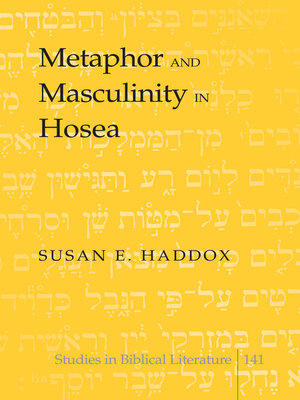
Sign up to save your library
With an OverDrive account, you can save your favorite libraries for at-a-glance information about availability. Find out more about OverDrive accounts.
Find this title in Libby, the library reading app by OverDrive.



Search for a digital library with this title
Title found at these libraries:
| Library Name | Distance |
|---|---|
| Loading... |
The metaphors in Hosea are rich and varied, comprising both gendered and non-gendered image fields. This book examines the use of metaphor in Hosea through the lens of masculinity studies, which provides a means to elucidate connections between the images and to analyze their cumulative rhetorical effect. The rhetoric of both the gendered and non-gendered imagery is analyzed using a model from cognitive anthropology, which divides social space along three axes: activity, potency, and goodness. People use metaphors to position and to move one another within this space. These axes reveal how the metaphors in Hosea rhetorically relate the audience, represented by Ephraim/Israel, and YHWH to a particular construction of masculinity. Hosea uses the imagery of Assyrian treaty curses to reinforce YHWH's masculinity and dominance, while undermining the masculinity of the audience. The rhetoric of the text attempts to bring the audience into an appropriately subordinate position with respect to YHWH and to shape its members' actions and attitudes accordingly.







